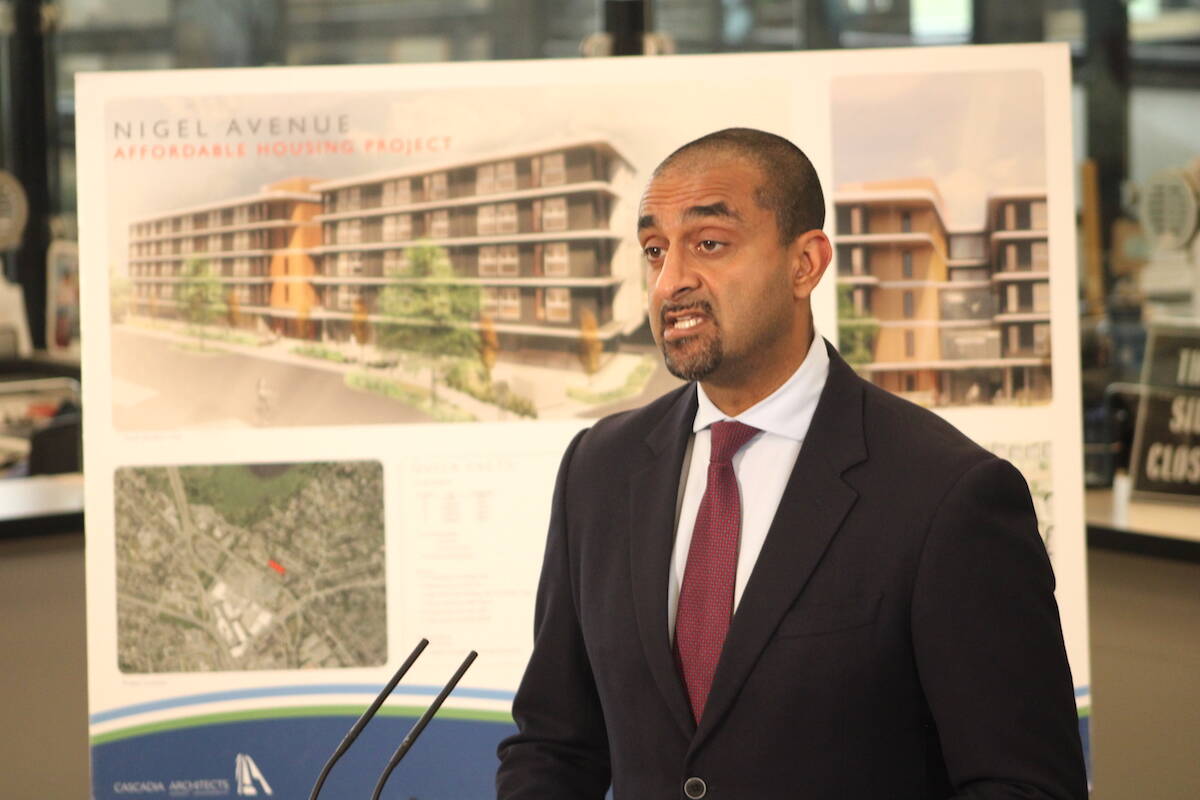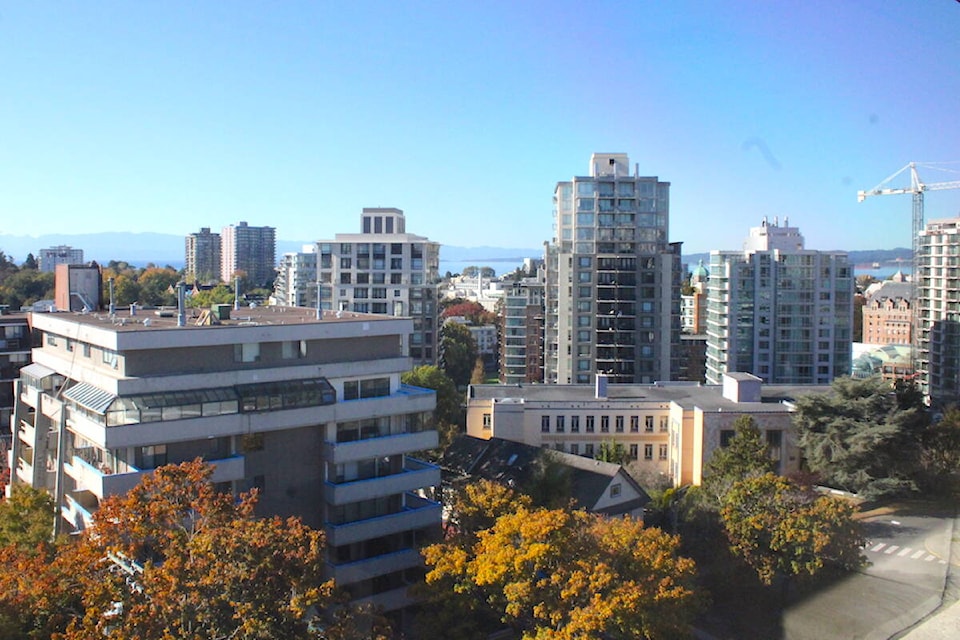As rent increases between tenancies remain unregulated in B.C., someone entering a Greater Victoria rental in 2022 paid a third more on average than someone already living in the same building.
Incoming tenants are paying a premium compared to those in occupied B.C. rentals, with that affordability gap seeing a more than ten-fold increase for those trying to find a place in the Capital Region over the past decade.
The Canadian Mortgage and Housing Corporation (CMHC) found someone moving into an average Greater Victoria two-bedroom rental in 2022 would pay 33-per-cent more than a tenant of an occupied unit in the same building. Last year in Vancouver, the average asking rent for vacant units was 43-per-cent higher than the average rent for all occupied units, CMHC found.
Despite this, B.C.’s housing ministry said bringing in rent controls between tenancies will not be included in its looming housing legislation.
A 2018 report from the government’s rental housing task force didn’t recommend vacancy controls after concluding it would have unintended consequences, such as reducing the affordable rental stock or lowering investment into needed repairs.
Instead, the government is focused on expanding the rental supply by building new units, eliminating strata rental bans and expanding the speculation and vacancy tax to more places, Housing Minister Ravi Kahlon said in a statement to Black Press Media.

The task force has not studied the issue since its 2018 report, while the unaffordability of vacant units has only grown since then. The average asking price for a vacant Greater Victoria rental was $39 more than that of an occupied unit in 2014. By 2020, that gap had grown to $356.
A Together Against Poverty Society (TAPS) petition has been calling on the province to bring in vacancy controls as it flags how costs continue to soar in Victoria and Vancouver, even as the cities add record amounts of new rentals.
“The government’s current approach of addressing the housing crisis by building more rental housing is not enough,” the Victoria group’s petition states. “The current system provides BC landlords with huge financial incentive to evict tenants by any means necessary.”
A housing ministry spokesperson said “vacancy control provides rent protection for existing units, but research shows that it inhibits the building of new rental housing units — exactly what our province needs.”
The BC General Employees’ Union (BCGEU) released a report last month arguing vacancy controls are an effective tool “for addressing the extreme housing affordability crisis facing B.C. renters. The report examined vacancy control policies in B.C., Ontario, Manitoba and P.E.I. from the 1970s onward and found no evidence that tying rent to units, rather than tenants, had significant negative impacts on new rental housing supply.
The Vancouver Tenants Union (VTU) was among the seven labour, anti-poverty and other organizations that joined the BCGEU’s call for B.C. to implement the controls.
“They continue to cite five-year-old recommendations from a panel of ‘experts’ and a fear of disincentivizing developers as reasons why such measures are not feasible,” a VTU spokesperson said.
B.C. caps annual rent increases for those in the same unit and will allow a 3.5 per cent hike in 2024. But as landlords have free rein on how much they can raise the rents of their units between tenancies, communities also want the province to change that.
Delegates at last month’s Union of B.C. Municipalities (UBCM) conference endorsed a policy resolution calling for regulating rent increases between tenancies so that the hikes are “reasonable and fair.” The local politicians defeated a similar measure at the 2022 conference by seven votes.
Krista Loughton, one of the Victoria councillors who brought the proposal forward, said the request asks the province to find a balance between tenants’ and landlords’ needs.
“The reality is, B.C. has the highest rate of no-fault evictions in the country, so it is clear action is required,” Loughton said in an email. “We are in a dire rental housing crisis, and I think the province could find a balance for rent controls in the same way they did for annual rent increases.”
Statistics Canada on Wednesday (Oct. 4) released a study showing how affordability differs between new and more established tenants.
Across Canada, those who have moved into their rental within a year – which StatsCan calls “recent renters” – pay higher amounts than more settled tenants. The median monthly shelter cost in 2021 for a two-bedroom dwelling in Canada was $1,330 for recent renters and $1,050 for “existing renters” – those in the same unit for over a year.
Greater Victoria’s recent renters in 2021 paid $370 more a month for a median-priced two-bedroom space compared to an existing renter of those units.
Both tenant categories from the Capital Region are paying more than the vast majority of Canadians. Only Toronto and Vancouver had more expensive recent and existing rental markets than Greater Victoria, according to StatsCan.
Canadians are likely catching on that moving means they’ll face higher monthly costs as the proportion of recent renters fell between 2016 and 2021.
StatsCan also found half of B.C.’s recent renters live in unaffordable housing, meaning they spend more than 30 per cent of their income on rent. Only Ontario, at 52 per cent, saw a larger share of those newer tenants living in unaffordable housing.
Young adults are more likely to be recent renters and those aged 18 to 34 are almost twice as likely to live in unaffordable housing compared to existing renters from the same age group.
Latin American, Arab and Black populations had the highest rates of recent renters nationally and within each of these racialized groups, recent renters were at greater risk of being in unaffordable housing.
READ: Victoria, Saanich, Oak Bay must build 10K housing units in 5 years: B.C.
